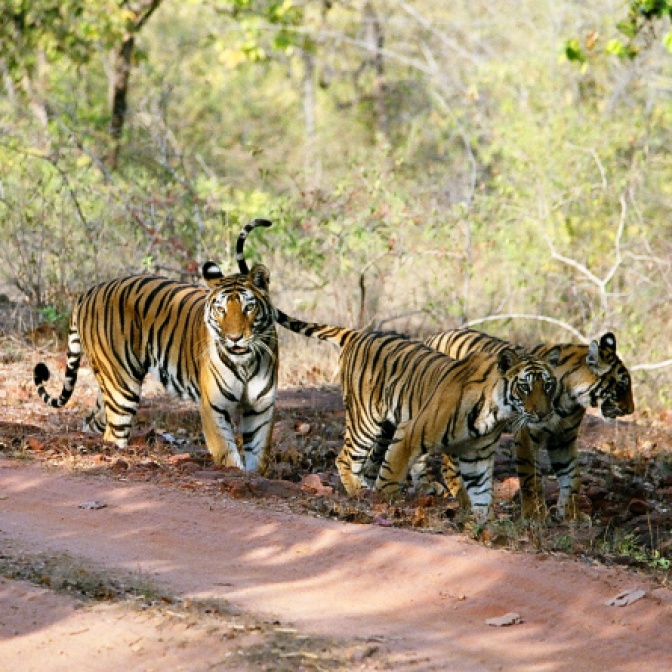Autumn is in the air and, rather than tidying up my garden, painting the newly rebuilt porch
or – ahem – concentrating on work, I’m thinking about warmer places and other, earlier times.
*
When the rice and paneer with peas are reduced to scraped-out dishes, Pradeep, still in his forest guide greens, appears. ‘May I?’ He gestures at an empty chair.
‘Please.’
Sitting, he drinks with relief from his bottle of beer. I don’t blame him. Although it’s evening, and already dark, the air is still thick and hot enough to feel like a mugging about to happen.
‘Would you like to see some photographs?’
It’s quite a selection: tiger, antelope, birds of all kinds, even dhole, the elusive Indian wild dog. He’s keen to talk about f stops, ISO levels and shutter speeds, but this is far too technical to be interesting when set against the oranges and blacks of a tiger’s coat, and the wary glint in a chital’s eye.
Once we’re finished exclaiming over the photographs, he brushes away an errant grain of rice, and places a slim manila folder on the table. There’s a reverence to his movements and, when I see what’s inside, I see why.
These are pen-and-ink drawings, and executed with such skill that I half expect each animal to stir itself, stretch, and step out of the paper. I pause over one: a tiger half-submerged in water, her tail curling up into the air, and her face wrinkled as if in joy.
‘Ah, yes, Neelam.’ Pradeep could be her fond uncle. ‘Maybe, tomorrow, we’ll see her.’
Tomorrow, when it arrives, is cool enough to require a jacket, and still dark enough to set me fretting about what may pass by, unseen. However, once through the park gates, the air has lightened to purply-grey, and I can make out the humped shape of some animal making for the tree-line. The shape is familiar, but I can’t put my finger on it.
‘Sloth bear. Baloo,’ Pradeep says, and laughs.
Baloo. Of course. These sal and bamboo forests are where Kipling set his Jungle Book. How fitting it seems to sight one of his most important characters.
Further inside the park, the forest closes around us. I imagine the rustling of the leaves and scraping of branches to be the trees talking to each other, perhaps warning of our arrival. Pradeep has no time for such fancies. He’s listening for the alarm calls of monkeys, or birds.
But no warning is given. Around a corner, past some large trees (‘duck!’ someone calls, as the branches skid over our heads), and there she is: Neelam, identifiable by her very large white ear spots. Amber eyes watch us and, as I look at her, it’s like meeting someone I already know. Her mouth opens, pink and toothed, and she calls: a sort of grumbly roar. Not to us, but to some concealed, not-to-be-known other.
Later, I buy her pen-and-ink portrait. I’ve no idea if she’s still alive but I pass her every time I come down the stairs. I know I’m anthropomorphising, but I feel we know each other well. She’s become a friend.
Photographs © Louise Taylor
(Clockwise from top: Tigress with two of four cubs in Bandhavgargh National Park; large male tiger in Kanha National Park; Langur monkeys in Sariska National Park; female sambar deer in Sariska National Park)



